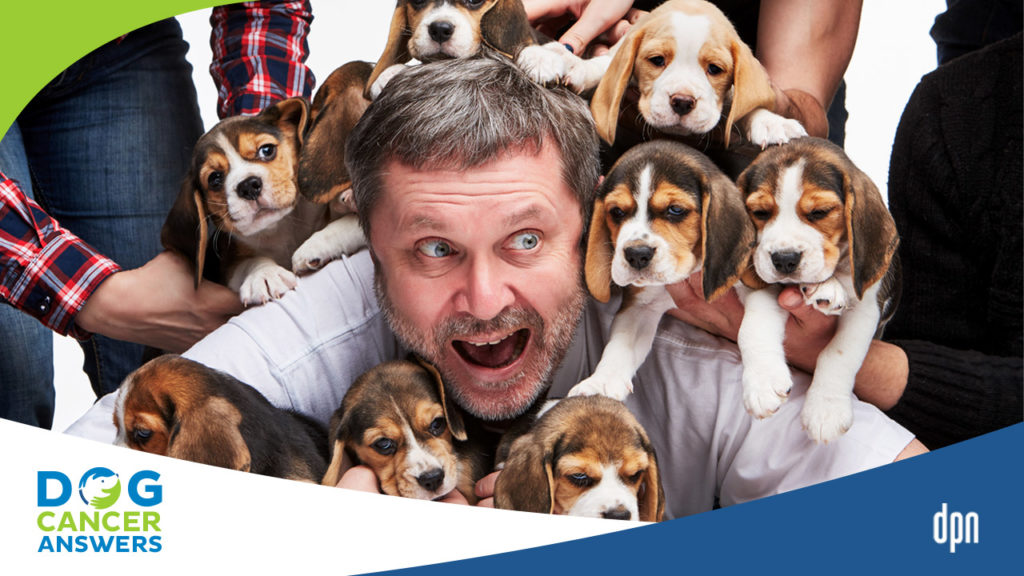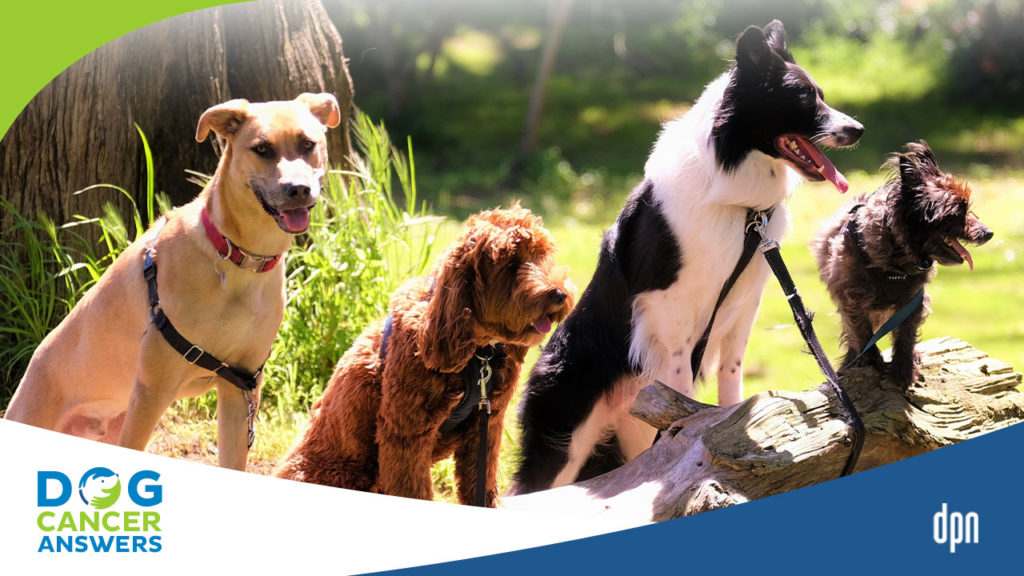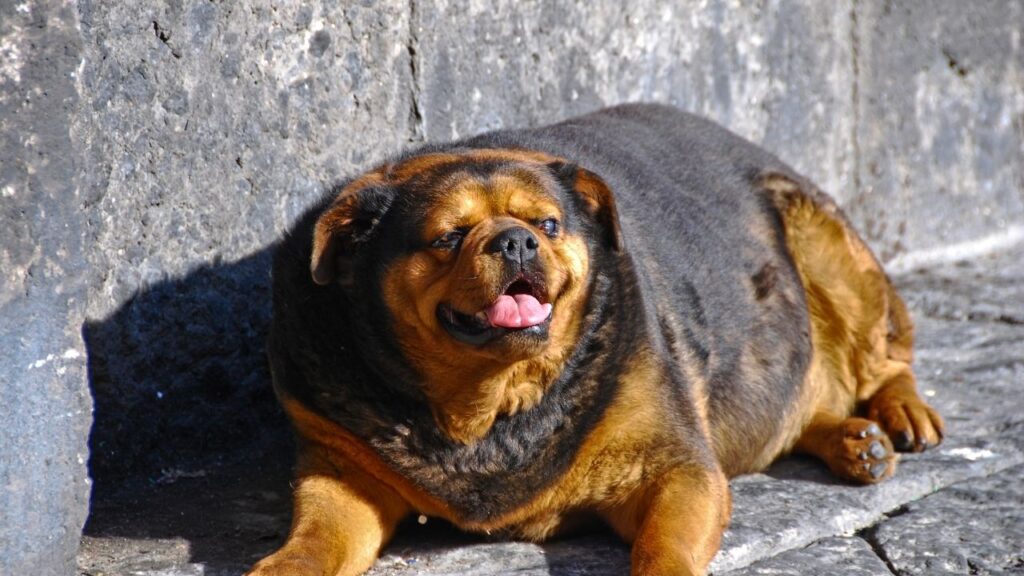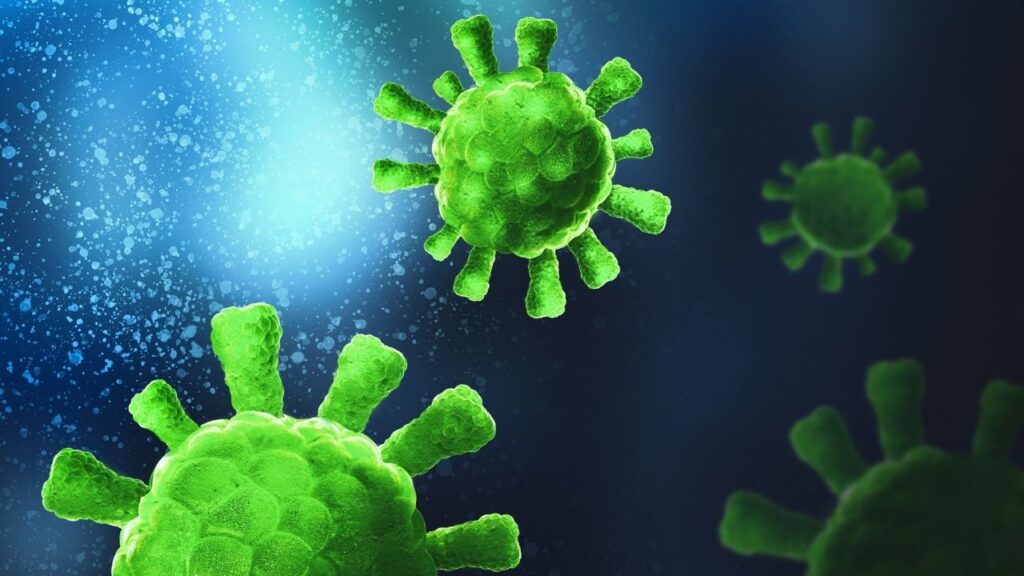While there are some breeds that have a higher risk of certain cancers, there is no predicting whether your specific puppy, whether purebred or mixed breed, will get cancer. If there is a breed you love heart and soul, the best you can do is choose a responsible breeder who has good breeding practices and then give your doggy pal the best life they can live.
Key Takeaways
- The dog breed that is most susceptible to cancer is the Boxer.
- We don’t know which dog breed has the lowest cancer rate overall, but of the 25 most popular breeds, the Pomeranian has the lowest cancer rate.
- There is no number one cause of cancer in dogs. Cancer is caused by a combination of genetic and environmental factors.
Genetics are Responsible for Why Some Dog Breeds are Prone to Cancer
Domestic dogs probably evolved from wolves 20,000-30,000 years ago, but as humans selected specific dogs to breed together for specific traits, the gene pool for each specific breed narrowed.
It is probably this shrinking gene pool for each pure breed that has resulted in different health risks for different breeds, including the risks of certain cancers. Evidence can be seen for this in that many of the oldest breeds have the least cancer risk (and most genetic diversity).1
Cancers are caused by a complex mix of:
- Genetics
- Environmental factors like diet, carcinogen exposure, and others
- Chance
You can think of it this way. Somewhere in history, maybe a few of the best examples of Breed X, just by chance, carried a gene that can predispose to a specific type of cancer. That gene got passed on to many generations of pups, particularly if one of those parents was a stud who could have sired many litters with many bitches. That would mean that a large percentage of dogs in that breed could carry that gene.
Another possibility is what is known as genetic covariance. Sometimes two genes tend to stick together over time. For example, it is possible that dogs that carry a gene for long legs may also carry a gene that makes them at higher risk for osteosarcoma, and those two genes stay linked with time.
Do “Bad” Genes Always Cause Cancer?
While it is clear that breed predispositions for specific cancers probably come from genetics, at this point it is not possible to test for specific genes and give specific predictions about cancers—in humans or dogs. Nor is it possible to say any individual dog of breed A will get cancer while a dog of breed B will not.
While there are some genes in humans which drastically increase the risk of some cancers, like BRCA1, even those are no guarantee that you will get cancer. Often, chance comes into play.
With many genetic predispositions, you might carry one safe copy of a gene from one parent and one cancer-causing gene from another parent. Chance could cause a mutation in your safe copy, leading a cell down the path to cancer.
Or perhaps there are several genes, each carrying small increased risks of cancer, but unable to head down that path alone, so chance has to deliver a final mutation. It might be a spontaneous mutation in an individual that tips the scale, or it could be that the genetics of two healthy, long-lived parents line up in just the wrong way in their offspring and cause them to develop cancer.
Even though we cannot test for cancer risk in most cases, a dog family that has few cases of cancer is less likely to have a lot of pro-cancer genes, so a puppy from that pedigree is less likely to develop cancer themselves.
Size and Cancer Risk
Another interesting observation is that in both humans and dogs, increased size correlates with increased cancer risk.1,2 This is not in relation to obesity, but for humans, height, and dogs, breed size.
It is not entirely clear what causes this correlation. It is possible that it is simply an increased statistical chance of one cell going bad and heading down the cancer path because a larger body, quite literally, has more cells, so there are more chances for a cell to become cancerous.
It may also be that a genetic component involved in height or body size can also increase risk of cancer or co-varies with a gene that can increase cancer risk. It is also possible that it is both, and the genetics of body size and the number of cells contribute to different degrees for different cancers.2
Whatever the exact reason or mechanism for this phenomenon, larger dogs generally have a higher cancer risk than small dogs.
Dog Breeds Prone to Cancer
Here is the good thing: scientists are actively studying what breeds have what cancer predispositions, and they are using that information to understand how genetics contribute to cancer. That is helping both humans and dogs move toward better treatment and prevention! But what cancer risk comes with what breeds?
According to one large study out of the UK, overall the average risk for cancer for a dog is 27%.1 Some breeds carry an above average risk of cancer.
Whenever you are looking at breed-specific data, consider the number of dogs in the study. If a breed only had a small number of dogs in the study, the results for that breed probably only reflect chance and not the actual risk of cancer in that breed. Larger numbers give more accurate predictions.
In many cases, breed risks are associated with specific cancer types, rather than cancer in general.
Here are some of the breeds found to have the highest risk in studies, along with cancers that they are prone to:
- Airedale Terrier – lymphoma1
- Beagle – mast cell tumor,1 bladder cancer, endocrine system cancer, mammary carcinoma, liver cancer, splenic cancer;4 in the top three for relative cancer risk from Nationwide Pet Insurance4
- Bernese Mountain Dogs – especially histiocytic sarcoma1
- Boston Terrier – mast cell tumor1
- Bouvier des Flandres – lymphoma1
- Boxer – mast cell tumor, hemangiosarcoma,1 central nervous system tumors such as brain cancer, lymphoma,1,4 skin cancer, heart cancer;4 found to have the highest relative risk of cancer by Nationwide Pet Insurance4
- Bullmastiff – mast cell tumor1
- Chow-Chow – melanoma1
- Cocker Spaniels – melanoma1
- Doberman Pinscher – 10x risk of osteosarcoma1
- Flat-Coated Retrievers – histiocytic sarcoma1
- German Shepherd Dog – osteosarcoma, hemangiosarcoma1
- Golden Retriever – histiocytic sarcoma, central nervous system tumors, mast cell tumor, melanoma,1 hemangiosarcoma, osteosarcoma, lymphoma,1,4 heart cancer, liver cancer;4 in the top three for relative risk of cancer from Nationwide Pet Insurance4
- Great Dane – osteosarcoma1
- Greyhound – osteosarcoma1
- Irish Setter – osteosarcoma1
- Irish Wolfhound – osteosarcoma1
- Labrador Retriever – lymphoma, mast cell tumor1
- Poodles – melanoma1
- Pug – mast cell tumor1
- Rhodesian Ridgeback – 10x risk of osteosarcoma, mast cell tumor1
- Rottweiler – 10x risk of osteosarcoma,1,4 histiocytic sarcoma, lymphoma1
- Saint Bernard – osteosarcoma, lymphoma1
- Schnauzers – melanoma1
- Scottish Terrier – lymphoma, melanoma1
- Staffordshire Bull Terrier – mast cell tumor1
- Weimaraner – mast cell tumor1
Brachycephalic breeds in general have a higher incidence of central nervous system tumors and lymphoma.1
Pekingese/Poodle mixes were also noted as having higher rates of melanoma in one study.1
How to Reduce Risk When Choosing a New Dog
If you have your heart set on a specific breed, remember, all breeds come with different risks to their health. And until we fully understand every gene that our dogs have, we cannot guarantee that any one dog will never develop cancer.
There are, however, things that you can control when choosing a new dog to reduce cancer risk.
Ask for Health History
Choosing a puppy whose breeders follow good breeding standards that include testing for known health problems is a great first step in bringing home a puppy that will live a long healthy life by your side.
The breeder should be able to tell you how long a litter’s grandparents and great-grandparents lived, and what they died of.
Check out the Canine Health Information Center (https://ofa.org/chic-programs/) to find out what health clearances your breed recommends testing for, and then see if the breeder you are considering does those tests. You can even look up individual dogs’ test result on the Orthopedic Foundation for Animals website (www.ofa.org) or on the Embark website (www.embarkvet.com).
This goes for mixed breed dogs too – look up the more common health problems in each of the breeds that make up your dog’s heritage.
Unfortunately there are no tests, genetic or otherwise, that can tell us if your puppy will develop cancer or have a greater risk for cancer. But if your breeder tests for the health conditions that currently have tests, it shows dedication to the health and wellbeing of their breed. These breeders are more likely to be open about cancer risk in their lines.
Because cancers are generally a disease that comes with age, your breeder cannot know if the dogs they bred will develop cancer until long after they have had litters of puppies. But the breeder should be able to tell you which cancers have occurred in their lines so that you can make an educated decision about whether or not you want to purchase that puppy.
Consider a Breed with Lower Cancer Risk
If high cancer risk is something that you can’t handle or don’t want to go through, avoid breeds with known cancer predispositions. Although they are sweet and adorable, the Golden Retriever cancer risk, Labrador Retriever cancer risk, and Boxer cancer risk are on the higher side (along with several other breeds). If you are hooked on one of these breeds, look for a breeder whose dogs have lived long, healthy lives.
But if you’re flexible, and really don’t want to go through a cancer diagnosis, opt for a breed that does not have a high known cancer risk. Not all breeds have been evaluated for cancer risk, but of the 25 most popular breeds, Nationwide found that the Pomeranian, Chihuahua, and French Bulldog had the lowest relative risk of cancer.4
This still doesn’t guarantee that your dog won’t get cancer, but it tips the odds in your favor.
Consider a Small Dog
Multiple studies have shown that smaller dogs are less likely to get cancer. Even if you know nothing else about a prospective dog’s pedigree and health history, choosing a small dog increases the odds of a cancer-free life.
Consider a Mixed Breed Dog
Nationwide Pet Insurance reviewed claims from over a million dogs that they have insured, and found that purebred dogs as a whole are more likely to develop cancer and file a health insurance claim for it than mixed breed dogs.4 If you aren’t dead-set on a particular breed, but really want to avoid cancer risk as much as possible, a mixed breed dog might be the better choice.
That said, mixed breed dogs do still get cancer. Being a mixed breed does not guarantee that your dog won’t get cancer.
Stay in Touch with Your Dog’s Breeder
Whether your dog is a purebred or mixed breed, top show dog or sunbather extraordinaire, keep their breeder in the loop. Sharing information about your dog’s health throughout his life will help the breeder keep track of any potentially heritable issues that are in their lines.
Obviously, you can’t do this if you don’t know your dog’s origins, and that is perfectly fine.
The Bottom Line
Remember that cancer is caused by a mix of genetics, environment, and chance. There isn’t much you can do about chance, and while you can make some choices to minimize genetic risk, there is never a guarantee that a particular dog will or won’t get cancer.
But you CAN give your dog a healthy, happy environment. Your dog will have a lower risk of cancer herself if she:
- gets annual wellness exams from a veterinarian
- eats a balanced diet
- maintains a healthy weight
- is active and happy
- avoids pollutants and other carcinogens
These steps are good for all aspects of your dog’s health and will maximize their time to share a joyful life with you, no matter what the breed or mix!
Elaine Ostrander, PhD, is a comparative oncology expert. She shares how studying genes in dogs and people leads to insights, but also treatments, in both.
- Dobson JM. Breed-predispositions to cancer in pedigree dogs. ISRN Vet Sci. 2013;2013:941275. doi:10.1155/2013/941275
- Nunney L. Size matters: height, cell number and a person’s risk of cancer. Proceedings of the Royal Society B: Biological Sciences. 2018;285(1889):20181743. doi:doi:10.1098/rspb.2018.1743
- Edmunds GL, Smalley MJ, Beck S, et al. Dog breeds and body conformations with predisposition to osteosarcoma in the UK: a case-control study. Canine Med Genet. Mar 10 2021;8(1):2. doi:10.1186/s40575-021-00100-7
- Benson J, Neff S, Tincher EM, Spadafori G. Diversity of Risk: Purebred Dogs and Cancer. Nationwide Pet Insurance. https://assets.ctfassets.net/440y9b545yd9/4inMq7Attnq5K1kInWrqcR/01160a4e7cfcbbda1c0248d2bafc39be/Nationwide_Diversity_Of_Risk_Purebred_Cancer_White_Paper.pdf. Published March 2022. Accessed May 1, 2023.
Topics
Did You Find This Helpful? Share It with Your Pack!
Use the buttons to share what you learned on social media, download a PDF, print this out, or email it to your veterinarian.






